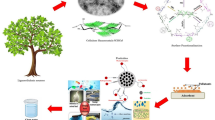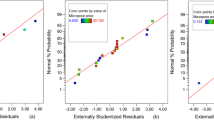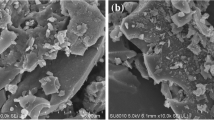Abstract
The 4-amino-2,2,6,6-tetramethylpiperidine-1-oxy radical (4-amino-TEMPO)-mediated oxidation was applied to regenerated cellulose, and the obtained cellouronic acid was analyzed by size-exclusion chromatography attached with a multi-angle laser light scattering detector (SEC-MALS). Although the cellouronic acid filtered with the usual 0.1 μm membrane gave a bimodal SEC-elution pattern, the high-molecular-mass fraction was removed by micro filtration of the cellouronic acid solution with a 0.02 μm membrane. It is likely, therefore, that some colloidal particles formed from regenerated cellulose by the TEMPO-mediated oxidation are present as incompletely oxidized residues in the cellouronic acid sample and behave as the high-molecular-mass fraction in the SEC elution pattern. Then, the SEC-MALS analysis was applied to the 0.02 μm membrane-filtered cellouronic acid, and the accurate DPw value of 36 was obtained for cellouronic acid. This DPw value was far lower than that of carboxymethyl cellulose, hydroxypropyl cellulose or alginic acid, resulting from significant depolymerization of cellulose chains during the TEMPO-mediated oxidation. Because the value of DPw 36 for cellouronic acid is close to the leveling-off DP (about 40) of regenerated celluloses obtained by the dilute and heterogeneous acid hydrolysis, the DPw value of cellouronic acid must reflect the solid-state structure of the original regenerated cellulose used in the TEMPO-mediated oxidation.
Similar content being viewed by others
References
Chang P.S., Robyt J.F. (1996). Oxidation of primary alcohol groups of naturally occurring polysaccharides with 2,2,6,6-tetramethyl-1-piperidine oxoammonium ion. J. Carbohydr. Chem. 15:819–830
de Nooy A.E.J., Besemer A.C., van Bekkum H. (1995). Highly selective nitroxyl radical-mediated oxidation of primary alcohol groups in water-soluble glucans. Carbohydr. Res. 269:89–98
Hoogendam C.W., de Keizer A., Stuart M.A.C., Bijsterbosch B.H., Smit J.A.M, van Dijk J.A.P.P., van der Horst P.M., Batelaan J.G. (1998). Persistence length of carboxymethyl cellulose as evaluated from size exclusion chromatography and potentiometric titrations. Macromolecules 31:6297–6309
Isogai A., Kato Y. (1998). Preparation of polyglucuronic acid from cellulose by TEMPO-mediated oxidation. Cellulose 5:153–164
Kato Y., Habu N., Yamaguchi J., Kobayashi Y., Shibata I., Isogai A., Samejima M. (2002). Biodegradation of β-1,4-linked polyglucuronic acid (cellouronic acid). Cellulose 9:75–81
Kato Y., Matsuo R., Isogai A. (2003). Oxidation process of water-soluble starch in TEMPO-mediated system. Carbohydr. Polym. 51:69–75
Montanari S., Roumani M., Heux L., Vignon M. R. (2005). Topochemistry of carboxylated cellulose nanocrystals resulting from TEMPO-mediated oxidation. Macromolecules 38:1665–1671
Perez D.S., Montanari S., Vignon M.R. (2003). TEMPO-mediated oxidation of cellulose III. Biomacromolecules 4:1417–1425
Saito T., Isogai A. (2004). TEMPO-Mediated Oxidation of Native Cellulose. The effect of oxidation conditions on chemical and crystal structures of the water-insoluble fractions. Biomacromolecules 5:1983–1989
Saito T., Yanagisawa M. and Isogai A. 2005. TEMPO-mediated oxidation of native cellulose. SEC-MALLS analysis of water-soluble and -insoluble fractions in the oxidized products. Cellulose 12: 305–315
Shibata I., Isogai A. (2003a). Depolymerization of cellouronic acid during TEMPO-mediated oxidation. Cellulose 10:151–158
Shibata I., Isogai A. (2003b). Nitroxide-mediated oxidation of cellulose using TEMPO-derivatives: HPSEC and NMR analyses of the oxidized products. Cellulose 10:335–341
Tahiri C., Vignon M.R. (2000). TEMPO-oxidation of cellulose: synthesis and characterization of polyglucuronans. Cellulose 7:177–188
Watanabe S., Hayashi J. (1974). Molecular chain conformation and crystallite structure of cellulose. I. Fine structure of rayon fibers. J. Polym. Sci. Polym. Chem. Ed. 12:1065–1087
Acknowledgments
The authors express their sincere thanks to Professor Walther Burchard, University of Freiburg, Germany, for valuable suggestions and comments␣made as part of the review process of an earlier manuscript. These suggestions resulted in a re-examination of our findings, and they helped␣produce a significantly improved paper. Mr.␣Masahide Nakamura of Shoko Co., Ltd., Japan kindly arranged the dn/dc measurement of␣samples in 0.1 M NaCl. This research has been␣supported by a Grant-in-Aid for Scientific Research (Grant number 11660160, 13660157 and 15380116) from the Japan Society for the Promotion of Science (JSPS).
Author information
Authors and Affiliations
Corresponding author
Rights and permissions
About this article
Cite this article
Shibata, I., Yanagisawa, M., Saito, T. et al. SEC-MALS analysis of cellouronic acid prepared from regenerated cellulose by TEMPO-mediated oxidation. Cellulose 13, 73–80 (2006). https://doi.org/10.1007/s10570-005-9021-4
Received:
Accepted:
Published:
Issue Date:
DOI: https://doi.org/10.1007/s10570-005-9021-4




